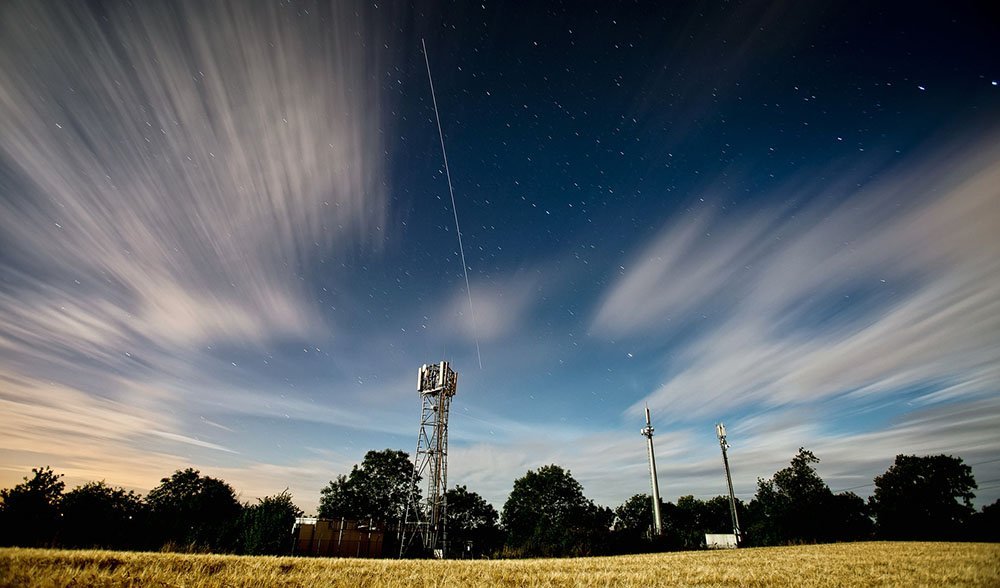When to spot the Space Station at your place

WE’RE A NATION that loves our astronomy – of the ten most popular International Space Station (ISS) sighting locations world-wide, Australia claims four of them.
Brisbane comes in only second to London, followed by Sydney in fourth, Perth in fifth and Melbourne in eighth – and it isn’t difficult to understand why.
The ISS is a star-gazer’s delight – travelling 28,000km per hour, it orbits the Earth every hour and a half, making it a regular guest among the stars.
And with an acre of solar arrays powering it, it is the biggest man-made object in space and second only to the Moon in brightness, ensuring easy observing – no telescope required.
The optimum time to see the station is within a few hours before and after sunrise and sunset, while it catches the Sun’s reflection, creating contrast with the dark night sky.
As such, sightings in one location can range from one per month to several in a week, depending on the time of day, and the time the station is overhead.
While some encounters are brief – less than a minute – observers can often enjoy four- to five-minute viewings as it sails across the sky, making for stunning photography.

The ISS photographed over Worcester, UK, in August 2015. (Image: Dave Grubb/Flickr).
Forever discovering
But it’s not all pretty light displays – the ISS is constantly updating Earth with information and making discoveries and breakthroughs that would otherwise be impossible.
More than 200 people from 15 different countries have visited the station since November 2000, with NASA astronaut Scott Kelly returning to Earth on 1 March this year after a record-breaking 520 days in space.
The six-person crew works around 35 hours a week, conducting research and investigations, leading to medical advancements, technological innovation and improved communication practices both in space and on Earth.
And with ambitious plans to send humans to an asteroid by 2025 and to Mars in the 2030s, research is critical.
The ISS has a great view of Earth from its 400km vantage point, so as it flies overhead, why not give the astronauts a wave!

Our view of the ISS from Earth doesn’t quite match the view of Earth from the ISS – but it’s a sight to see nonetheless. In this picture, astronauts work to construct part of the ISS in December 2006. (Image source: NASA).
Here is a list of the times and dates to see the station in the next fortnight around Australia:
Canberra, ACT
14–22 March
Best time:
- Saturday, 19 March, 8.10pm for 5 minutes
Sydney, NSW
14–22 March
Best time:
- Saturday, 19 March, 8.10pm for 4 minutes
Newcastle, NSW
16-22 March
Best times:
- Saturday, 19 March, 8.11pm for 4 minutes
- Monday, 21 March, 8.04pm for 4 minutes
Adelaide, SA
15–22 March
Best times:
- Friday, 18 March, 8.31pm for 4 minutes
- Sunday, 20 March, 8.22pm for 5 minutes
- Tuesday, 22 March, 8.16pm for 4 minutes
Hobart, TAS
10–21 March
Best times:
- Friday, 11 March, 8.41pm for 4 minutes
- Sunday, 13 March, 8.33pm for 4 minutes
- Tuesday, 15 March, 8.25pm for 4 minutes
- Thursday, 17 March, 8.18pm for 4 minutes
- Saturday, 18 March, 8.10pm for 4 minutes
Melbourne, VIC
11–22 March
Best times:
- Thursday, 17 March, 8.17pm for 4 minutes
- Saturday, 19 March, 8.09pm for 6 minutes
- Monday, 21 March, 8.02pm for 4 minutes
Perth, WA
16-22 March
Best times:
- Sunday, 20 March, 7.25pm for 4 minutes
- Tuesday, 22 March, 7.19pm for 4 minutes
Brisbane, QLD
18-23 March
Best times:
- Monday, 21 March, 7.04pm for 4 minutes
- Tuesday, 22 March, 6.13pm for 4 minutes
Darwin, NT
23-24 March
Best time:
- Thursday, 24 March, 7.10pm for 4 minutes
For more information on sighting times near you – including more information on how and where to spot the station in the sky, visit NASA’s Spot the Station site.




